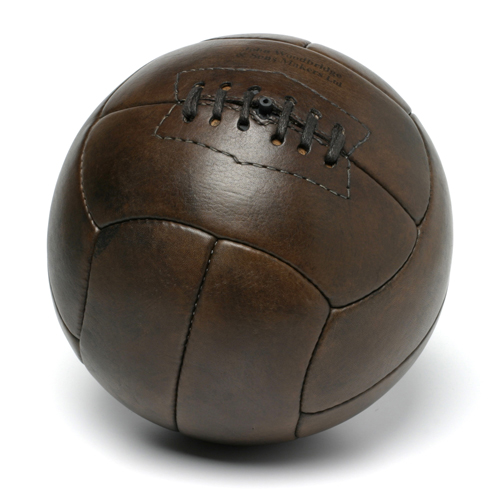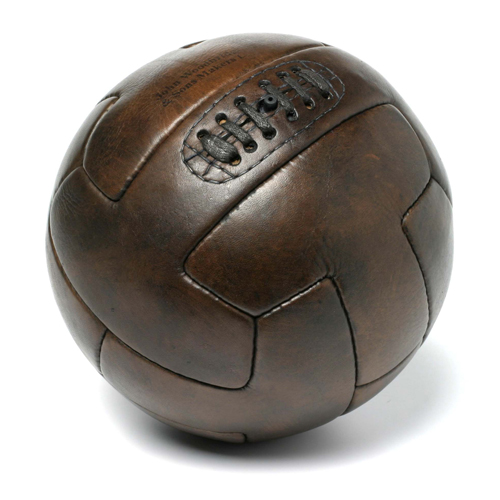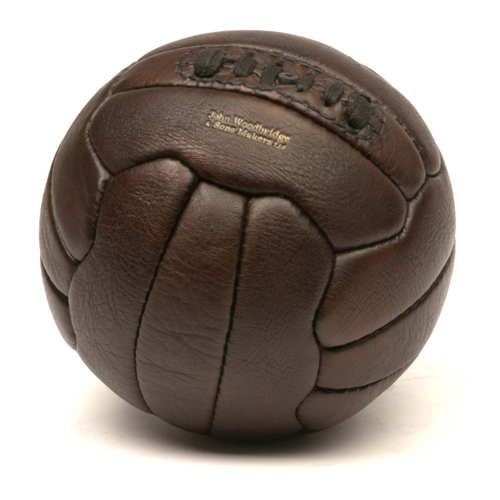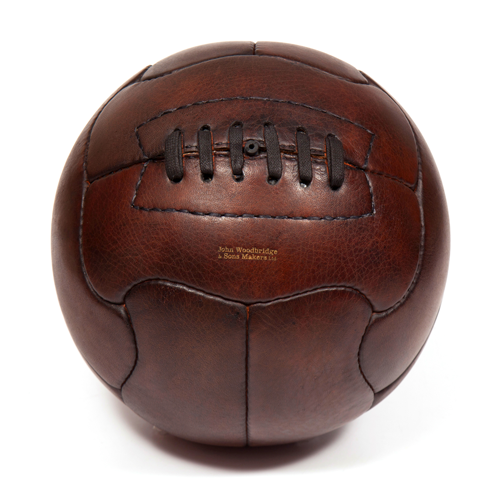The footballs are at the end of the nineteenth century, with the advent of professional sports, made from leather panels sewn around a rubber tube and tightened by a lace. Its design gradually improved until the 1960s with the development of modern materials ushering in a new era for ball sports.
The swollen pork or sheep bladder, tied at the end with a leather envelope to protect it, would be the oldest ancestor of the football filled with air as we know it today. These bullets were used during the parts of soule in the Middle Ages then of Florentine calcio in the Renaissance. The vulcanization of rubber and the invention in the 1860s of a model equipped with a bladder elaborated from this new elastic substance lead to a rounder ball with a better rebound. The pieces of leather that cover the inner tube are sewn and the envelope they form tightened by a cotton lace around a pipe, also rubber, an extension of the bladder that allows inflation from the outside. Over the years, with the development of football, the creation of its rules and the appearance of professionalism in England in 1885, the production of footballs multiplies in different forms in the construction of the leather sphere, with a gradual increase in the number of panels. Thus, until the 1950s we play with 10 and 12-panel models, including the T-shape and the Tiento at the 1930 World Cup or the Allen 13 panels for the 1938 World Cup in France. The Basel firm Kost Sport created the Swiss World Champion, the first 18-panel model, for the 1954 World Cup in Switzerland and Eigil Nielsen, a former Danish amateur footballer, a 32-panel balloon in the form of pentagons and hexagons, precursor of the famous balloon with black and white pieces still relevant today: the "truncated icosahedron", whose bladder is linked to the leather envelope and whose last seam is made with a curved needle. The lace, which caused false bounces and sometimes injuries during the game of head, disappears in the early 1950s under the impulse of Brazilian manufacturers Luis Pole, Antonio Tossolini and Juan Valbonesi with the Superball Duplo-T in Brazil's Cup world 1950.
From the mid-1960s, synthetic leather (or polyurethane) will replace leather for footballs and bladders will be made of latex. The German supplier Adidas will become the official supplier of the World Cup balloons, signing an exclusive contract that still runs today, with the famous Telstar model of the 1970 World Cup in Mexico, launched and tested two years before on the occasion of the 1968 European Championship of Nations in Italy.



 Old fashioned handmade by John Woodbridge, the replicas of leather footballs from the 1930, 1950 and 1954 World Cups.
Old fashioned handmade by John Woodbridge, the replicas of leather footballs from the 1930, 1950 and 1954 World Cups.
